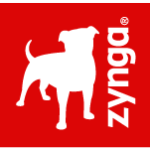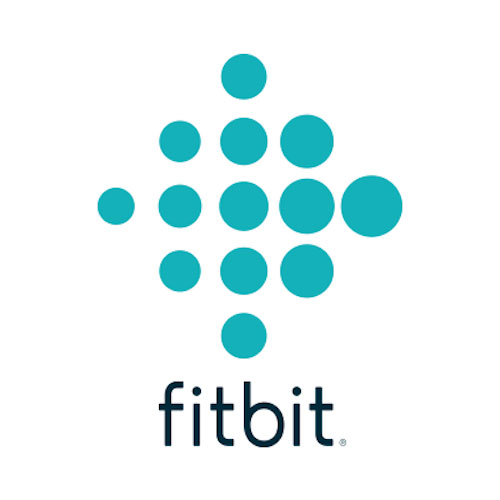Tag: Independent Consumer Stock Research
Fitbit: Struggling to Stay in Shape
 With trailing 12-month sales of $1.6 billion, a market cap of $1.8 billion, $658 million in cash and zero bank debt, Fitbit, founded in 2007, and based in San Francisco, CA, is the largest provider of internet-connected health and fitness tracking devices. The company addresses a multi-billion dollar annual revenue opportunity comprised of health-conscious consumers who wish to track daily progress toward achieving weight loss and fitness goals. The company offers a broad product line, consisting of six activity trackers that range in price from $60 to $150 at retail, and two smartwatches, priced at $200 and $300, respectively. Fitness trackers account for roughly 70 percent of revenue currently, with smartwatches accounting for most of the remainder.
With trailing 12-month sales of $1.6 billion, a market cap of $1.8 billion, $658 million in cash and zero bank debt, Fitbit, founded in 2007, and based in San Francisco, CA, is the largest provider of internet-connected health and fitness tracking devices. The company addresses a multi-billion dollar annual revenue opportunity comprised of health-conscious consumers who wish to track daily progress toward achieving weight loss and fitness goals. The company offers a broad product line, consisting of six activity trackers that range in price from $60 to $150 at retail, and two smartwatches, priced at $200 and $300, respectively. Fitness trackers account for roughly 70 percent of revenue currently, with smartwatches accounting for most of the remainder.
In the fourth quarter of 2016, Fitbit hit a brick wall amid execution challenges related to manufacturing and channel management. Missteps included being slow to address excess channel inventory, as well as operational challenges, including a poorly-timed headcount increase of 80 percent during 2016. In response to changing market conditions, management took corrective action at the start of 2017, including a six percent workforce reduction, and streamlining the number of devices offered. In addition, the company was reorganized around fitness devices and enterprise health.
While Fitbit continues to maintain a strong presence in the activity tracking market, the success of the Apple Watch, a higher end, more full-featured family of devices has redefined the market, and, to some degree, siphoned off demand for activity trackers. Fitbit has responded to this changing market dynamic through the introduction of two smartwatches, the Ionic, launched in late 2017, and more recently, the Versa. However, the company continues to face price competition in its core fitness tracker market, and has experienced soft demand for these products in the US in particular, its largest market. As a result, greater emphasis will be placed on smartwatches for future growth.
While smartwatches carry higher ASPs, they also feature lower gross margins than fitness trackers. Near term, the company is unlikely to improve by much its current gross margin, which hovers in the low 40 percent range. In the meantime, the company’s current cost structure prevents it from achieving break-even. While Fitbit maintains a strong cash position of more than $658 million and no debt, it has steadfastly refused to implement a share buy-back, preferring instead to utilize cash for leasehold improvements, along with tuck-in acquisitions, most recently geared to expanding its limited position in health-related services.
The firm’s reliance on the retail channel, including mass merchants and specialty retailers remains a source of concern, given the mixed signals coming from the retail industry, as well as a policy of recognizing revenue based on sell-in, rather than sell-through. As a final investor caveat, we note its dual class share structure guarantees the founders perpetual control of the voting rights of the company, which keeps it insulated from shareholder input. Overall, we see Fitbit as a company with longer term appeal, if it can manage to slim down for future success.
Veeva Systems: Taking the Cloud to Life Sciences
 With projected calendar 2015 sales of $410 million and a market cap of roughly $3.3 billion, Veeva Systems is a leading provider of cloud software for salesforce automation, content management, and sales contact data to the global life sciences industry. Based on an exclusive software license from salesforce.com (NYSE: CRM), Veeva’s CRM software is now utilized by 17 of the top 20 largest pharmaceutical and biotech companies, including eight of the top 10. Within the top 20, only three have thus far not made the switch to Veeva: Switzerland-based Roche Holding, France-based Sanofi, and France-based Novo Nordisk, which ranks in the top 15.
With projected calendar 2015 sales of $410 million and a market cap of roughly $3.3 billion, Veeva Systems is a leading provider of cloud software for salesforce automation, content management, and sales contact data to the global life sciences industry. Based on an exclusive software license from salesforce.com (NYSE: CRM), Veeva’s CRM software is now utilized by 17 of the top 20 largest pharmaceutical and biotech companies, including eight of the top 10. Within the top 20, only three have thus far not made the switch to Veeva: Switzerland-based Roche Holding, France-based Sanofi, and France-based Novo Nordisk, which ranks in the top 15.
Veeva has identified an annual market spend of over $5 billion in software for CRM, content management, and sales data, and so it has much running room ahead. Veeva has already captured an estimated 50 percent of the CRM market for pharma and biotech, and could very well capture as much as 60 percent of the market over the next several years, as the company continues to roll out new seats to existing customers, and sell additional CRM add-on modules.
Since Veeva is cloud-based, and features a multi-tenant architecture, the company can update the software of its entire customer base at the same time, reducing the time, aggravation, and cost associated with maintaining and updating several versions of the same software program. Veeva’s cloud-based product set stands in contrast to two of its largest competitors, Oracle (NASDAQ: ORCL), and IMS Health Holdings (NYSE: IMS), which support and maintain several software packages simultaneously, many of which have been developed for older client server computer systems, and are not hosted in the cloud. Support for these older software products detracts from keeping their cloud products up to date, which will likely lead to further market share erosion.
Veeva’s newer products for content management and sales data, respectively, accounted for less than 10 percent of sales a year ago, but now account for about 20 percent of product sales. These products carry slightly higher gross margins than the company’s CRM products, and more than double its addressable market. Veeva has additional room to sell Veeva CRM, Veeva Vault, and Veeva Network to existing and new customers, as well as to sell the new products to other segments in the life sciences market, such as medical devices, laboratory instruments, and CROs—segments with which the company conducts limited business currently.
Veeva benefits from an experienced management team, led by Peter Gassner, a former SVP of Technology at saleforce.com, and at Peoplesoft (later acquired by Oracle), where he was Chief Architect and General Manager for PeopleTools, and at IBM Silicon Valley Lab, where he participated in database research and development. Matt Wallach, co-founder and President, was formally GM of the Pharmaceuticals and Biotechnology division of Siebel Systems (later acquired by Oracle). CFO Tim Cabral has held financial management positions at Peoplesoft and other technology companies. Detailed knowledge of the specific needs of the pharma and biotech segments, gives Veeva a leg up over its competitors, many of whom have only general knowledge of the life sciences sector.
Veeva has a strong balance sheet, which features $438 million in cash and no debt, and continues to generate very solid cash flow, all the while growing the business, while running at a 30 percent operating margin in the most recent quarter.
Zynga: a Turnaround in Process
 With projected revenue of $763 million in 2015, a market cap of $2.7 billion, cash and securities of $1.1 billion and no debt, Zynga (NASDAQ: ZNGA) is a pioneer in the market for interactive social video games. In less than eight years, Zynga has catapulted itself into the ranks of the world’s largest video game companies, with 100 million monthly active users, and 1.1 million monthly unique payers. Best-selling games include Farmville 2, Zynga Poker, Hit it Rich, and Words with Friends, which account for about 75 percent of sales, while the company’s other 30-plus games account for the remainder. Zynga’s products are available on a wide variety of computer platforms including PCs, laptops, smart phones and tablets, and support major commerce platforms including the Apple iTunes store, Amazon.com, Google Play, and Facebook.
With projected revenue of $763 million in 2015, a market cap of $2.7 billion, cash and securities of $1.1 billion and no debt, Zynga (NASDAQ: ZNGA) is a pioneer in the market for interactive social video games. In less than eight years, Zynga has catapulted itself into the ranks of the world’s largest video game companies, with 100 million monthly active users, and 1.1 million monthly unique payers. Best-selling games include Farmville 2, Zynga Poker, Hit it Rich, and Words with Friends, which account for about 75 percent of sales, while the company’s other 30-plus games account for the remainder. Zynga’s products are available on a wide variety of computer platforms including PCs, laptops, smart phones and tablets, and support major commerce platforms including the Apple iTunes store, Amazon.com, Google Play, and Facebook.
Versus three years ago when it launched its IPO and Facebook’s desktop platform accounted for 90 percent of revenue, Zynga has reduced its exposure to the Facebook platform, and increased revenue generated from mobile platforms, such as iTunes, Google Play, and Amazon.com. As of the end of Q1, roughly 59 percent of sales came from mobile platforms, while 37 percent came from Facebook. With the interactive game industry undergoing a long term shift toward mobile devices, and with over 50 percent of monetized game play expected to occur on mobile devices in 2015, Zynga appears to be well positioned to harvest this shift.
Impatient with the results achieved by CEO Don Mattrick, who was hired by Zynga’s board about 18 months ago, Mark Pincus, Zynga’s founder and chairman, recently replaced Mattrick as CEO and simultaneously announced four major changes to the company’s strategy. These include: (1) a workforce reduction of 18 percent; (2) a focus on accelerating new products to market; (3) an exit from the runner and sports game categories; (4) a shift away from the company’s data centers in favor of Amazon Web services. With the changes announced by Pincus, we have a better framework for assessing the company’s progress. As a result we will focus on the pace at which Zynga:
(1) Delivers meaningful revenue from new action strategy and Match 3 games;
(2) Updates its evergreen titles, and gains share in existing product categories;
(3) Reduces its bloated cost structure relative to peers, such as King Digital and Electronic Arts;
(4) Begins to articulate a cohesive plan to achieve $2 billion in annual sales;
Despite an inglorious post-IPO history, Zynga still has a strong balance sheet, bolstered by over $1 billion in cash and no debt. The company is hovering near break-even, and even though it will be some time before Zynga demonstrates real earnings power, we believe that purchase of the stock at current levels may provide rewards to the long-term investor.


